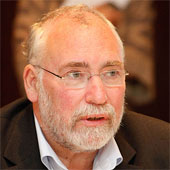China in My Life — A Personal Journey: The 1970s
What were the 1970s like in China, when even mainstream Western politicians came to call on Mao in Beijing?
December 29, 2017
In the 1970s, China became more and more mainstream as center-right politicians came to call on Mao in Beijing.
It was increasingly de rigueur for a politician to be seen toasting Mao — politicians such as Britain’s Prime Minister Edward Heath, French President Valéry Giscard d’Estaing and many others expressed positive views of Maoist China.
The Chinese Maoist model enjoyed about a decade of fashion.
During this same period that the Chinese image was being rehabilitated in the West, the Chinese reality was truly awful.
The fact that Western academe, the media, politicians and other opinion leaders chose to ignore these realities stands as an indictment — even though it may well be only a Maoist variation on a quite well-known theme.
A Personal Journey: The 1950s
A Personal Journey: The 1960s
A Personal Journey: The 1970s
A Personal Journey: The 1980s
China in the 21st Century
Exploring China’s Future
The leading French newspaper, Le Monde, was especially reprehensible in its unqualified fawning admiration for the Cultural Revolution and the Red Guards who drove it.
But many other mainstream newspapers — including The Times, The Sunday Times and The Observer in England — generally portrayed Maoism and the Cultural Revolution in a positive light.
Almost simultaneously with the evaporation of the Maoist myth model — Mao died in 1976, but the myth survived for another three or four years — there was another phenomenon that began attracting attention.
This was the rise of what was initially called the NICs — newly-industrialized countries of Hong Kong, Singapore, South Korea and Taiwan. It was later altered to NIEs (newly-industrialized economies) because two of the four “NICs” — Taiwan and Hong Kong — were not actually countries.
Taiwan, South Korea, Singapore and Hong Kong have no natural resources and have only small markets — the population of the four respectively was 20 million, 40 million, 2.5 million and 5.5 million.
The four economies, without tutoring from the World Bank or Western academic advisors or consultants, embarked on an innovative form of development that was subsequently labeled as export-oriented strategies.
Their initial focus was in labor-intensive industries — where their comparative advantages lay. Taiwanese industry in the mid-1960s was busily manufacturing and exporting what in the 1990s would become PRC staple exports — toys, textiles, garments and shoes.
The surge in textiles from the NIEs was so rapid and so unexpected that the “First World” countries hastily resorted to protectionism — by imposing in 1974 the Multi-Fibre Arrangement (aka, the Agreement on Textiles and Clothing).
The rise of the NIEs replaced erstwhile contempt or condescension of Asia — and especially Asian economic potential — with growing appreciation and admiration, in academic circles and in organizations such as the World Bank.
In 1993, the World Bank published a major study entitled, “The East Asian Miracle: Economic Growth and Public Policy,” which recognized the contribution this region had made not only to world economic growth — but also to development economics.
The fact, however, that the word “miracle” was inserted in the title would suggest that they still could not quite believe it.
It did not escape the notice of Western pundits that three of the four Asian NIEs were Chinese — or, in the case of Singapore, predominantly Chinese — while the fourth, Korea, could be said to be part of the Chinese cultural sphere.
This, among other things, brought about a reversal in the Western perspective on Confucianism. In the 19th and early 20th centuries, Western writers — including Karl Marx in what he referred to as the “Asiatic mode of production” — generally reviled Confucianism as a primary cause of Chinese backwardness.
When I had been a student in the United States in the 1960s, probably the only reference to Confucianism was in the crass “Confucius says” jokes. In the course of the 1970s and 1980s, however, Confucianism increasingly gained a very positive image in serious academe and among pundits generally. It was portrayed as East Asia’s equivalent to Max Weber’s protestant ethic in Europe.
In the course of the 1980s, as the U.S. economy seemed to decline and Europe caught Euro-sclerosis, while the Japanese economy was racing ahead on anabolic steroids, the NIEs were going from strength to strength. Notice was increasingly being paid to the overseas Chinese business networks and models.
China was beginning to emerge, prompting increased calls in the West for the imperative of a process of “Confucius-ization.”
Takeaways
In the mid-1960s, Taiwanese industry was busily manufacturing and exporting what in the 1990s would become PRC staple exports.
In the 1970s, China became more and more mainstream as center-right politicians came to call on Mao in Beijing.
As China was beginning to emerge in the 1980s, there were increased calls in the West for the imperative of a process of "Confucius-ization."
The leading French newspaper, Le Monde, was especially reprehensible in its unqualified fawning admiration for the Cultural Revolution and the Red Guards who drove it.
